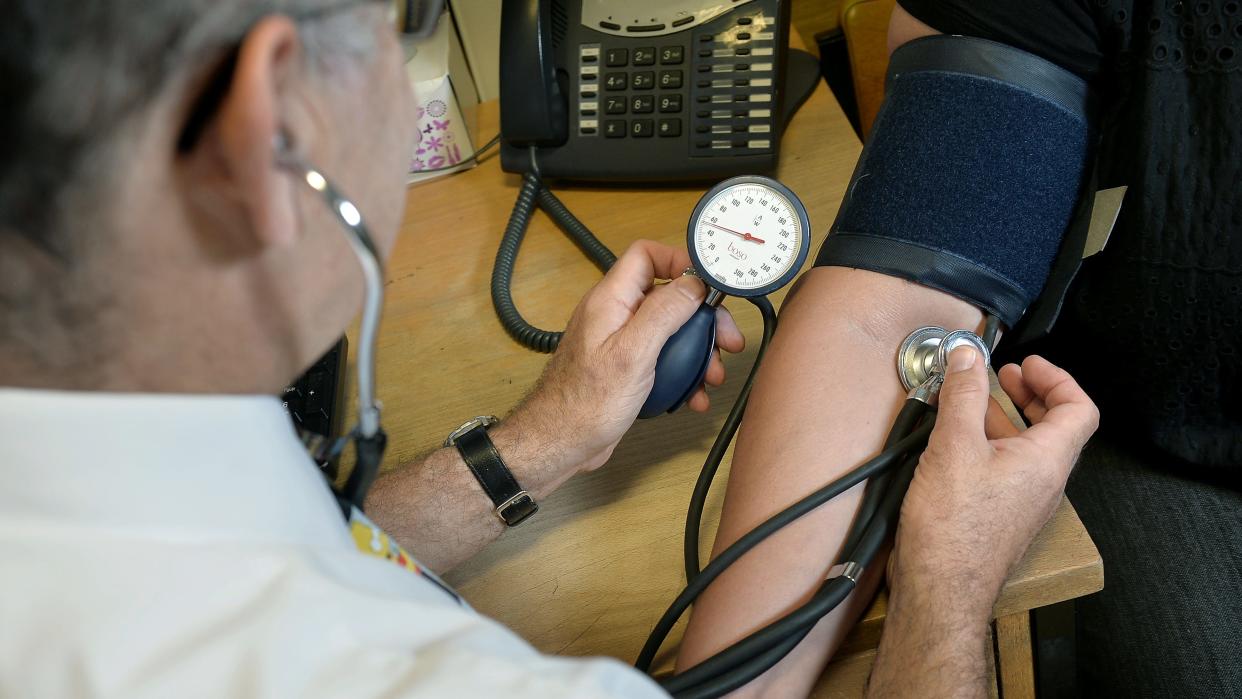Tipping point coming when GPs will no longer deliver most appointments – study

England faces a “tipping point in the near future” where the majority of appointments in doctor surgeries are no longer delivered by GPs, according to a new study.
Experts found the number of GP practices in England has dropped by a fifth over the last decade at the same time as more patients join surgery lists.
And while the number of staff working in GP surgeries has risen during this period – such as administrators and non-doctor roles – the number of GPs per 1,000 patients has fallen.
Writing in the BMJ Open journal, the team from University College London (UCL) and the London School of Hygiene and Tropical Medicine (LSHTM) analysed NHS data together with figures from other sources, including the regulator, the Care Quality Commission.
They found the number of people registered with an NHS GP practice in England grew by 11% from 56,042,361 to 62,418,295 between 2013 and 2023.
Meanwhile, the total number of GP practices in England fell from 8,044 to 6,419 over the same period – a 20% drop.
The data showed GP lists are rising, with the average practice list size increasing by 40% from 6,967 to 9,724 patients, equivalent to 291 more per year, researchers said.
The number of large practices with lists exceeding 20,000 patients also rose from 1% (81) of practices in 2013 to 6% (355) in 2023.
However, the research was unable to pinpoint how many practices closed for good or merged to become the “branch” of another practice.
The study found that while the total NHS general practice workforce grew 20% from 2015 to 2022, the number of GPs per 1,000 patients fell by 15% when accounting for the hours they worked and population growth.
Overall, the number of GPs working the equivalent of full-time fell from 27,948 to 27,321.
And the average number of GPs fell from 0.53 to 0.45 for every 1,000 patients, representing a 15% drop, with the fall significantly steeper among male GPs (23% compared to 4% of female GPs).
The data showed the average number of nurses in GP surgeries remained pretty stable between 2015 and 2022 but the average number of other roles, such as pharmacists, social prescribers and physician associates, rose by 67%.
Admin roles also rose by 14% over this period, making up over half of the NHS general practice workforce by September 2022.
Nevertheless, GPs continued to provide half of all appointments, while about 20% were provided by nurses and a further 20% by other patient care workers such as pharmacists, physician associates and social prescribers. For about 10% of appointments, it was unclear who delivered these.
The researchers wrote: “Falling GP numbers delivering the same number of appointments (per 1,000 patients) seems unsustainable; therefore, there is likely to be a tipping point in the near future where the majority of appointments in English general practice are no longer delivered by GPs.
“Maintaining relational continuity of care will be harder to achieve if there is a shortage of GP appointments and if patients need to see different clinicians for different problems, this will likely have implications for quality of care.”
Dr Luisa Pettigrew, lead author of the study, a GP and research fellow at LSHTM, said the Government must prioritise retaining GPs.
“While the headcount of GPs in NHS general practice has marginally increased, when you factor in reported working hours and the growing population, the total number of full-time equivalent GPs per 1,000 patients working in NHS general practice has fallen,” she said.
“General practice in England appears to be in a period of transition, from the smaller partnership-based model of general practice to that of larger organisations with more administrative and multidisciplinary staff but fewer GPs.
“However, patients are struggling to get appointments; concerns have been raised regarding the safety of introducing new roles without adequate supervision; and we are now facing the lowest ever levels of public satisfaction with general practice recorded.”
Concerns have been raised, including by the British Medical Association, over the role of physician associates, with the BMA saying they should not be diagnosing patients.
A Department of Health and Social Care spokesman said: “The NHS is broken and these findings show how much general practice has been neglected, but this government will fix it by shifting the focus of healthcare out of the hospital and into the community.
“We have also committed to hiring an extra 1,000 GPs into the NHS by the end of this year, have announced a pay rise for GPs and practice staff and will ensure practices have the resources they need to offer patients the highest quality care and meet increased patient demand.”
The researchers said their study did not include all GP surgery work, such as managing correspondence, prescriptions and reviewing test results, while workforce data is unlikely to cover overtime, which is common in general practice.
Professor Kamila Hawthorne, chairwoman of the Royal College of GPs, said: “The findings of this study make it very clear that we need many more GPs – we need to recruit more, but crucially we need to retain more in the profession for longer, delivering patient care.
“Whilst GP workload is escalating, both in volume and complexity, this is falling to a smaller number of GPs than we had five years ago.”
She added: “We work in multi-disciplinary teams, and whilst our excellent nursing staff and other members of the wider team, such as pharmacists and physiotherapists, are highly valued, these roles aren’t substitutes for GPs and mustn’t be used to plug gaps in the workforce.
“The new Government has recognised the importance of general practice and has announced positive short-term steps to address some current recruitment issues. But this study shows the gravity of the crisis in general practice.”


